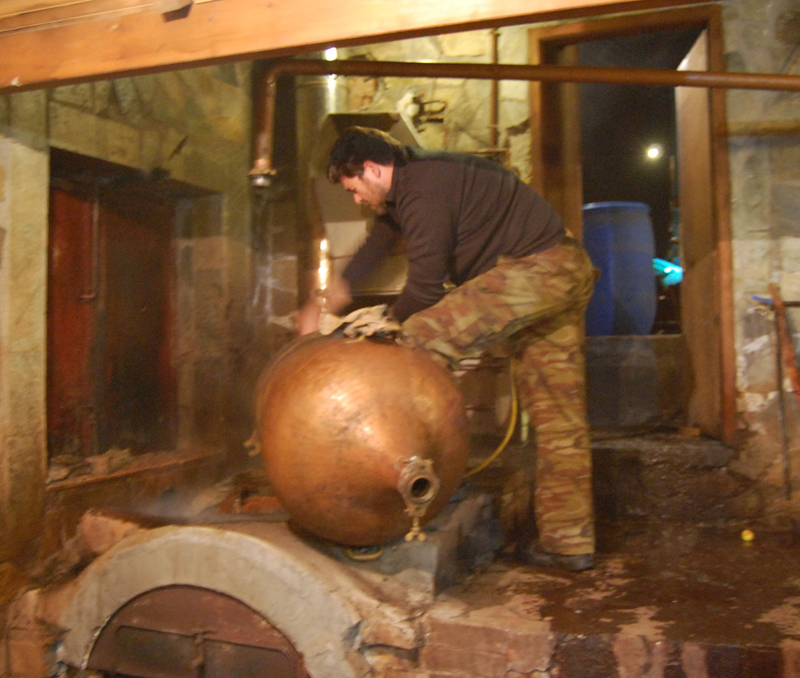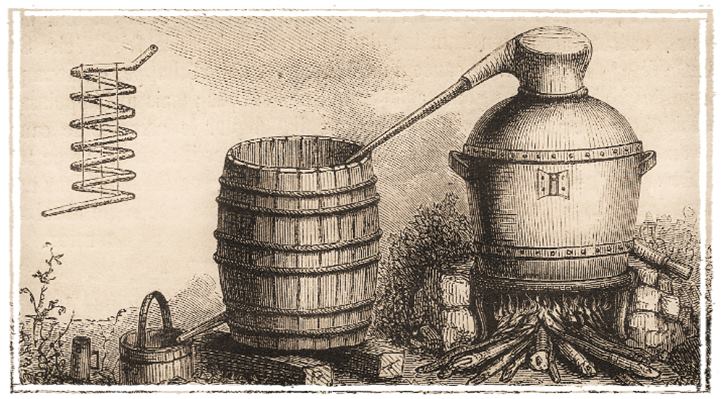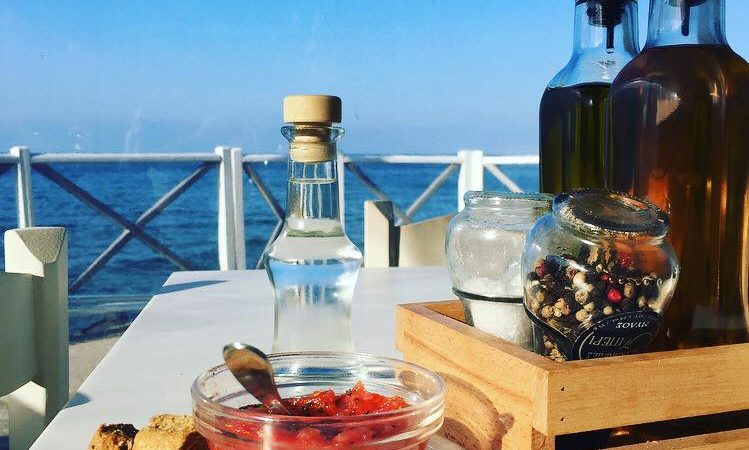November 17, 2017 November: the month of Raki in Crete
It is November and in Crete the raki cauldrons, like every year, make their appearance.
If you are in Crete this month, look for a mountain village in the inland and you will definitely find some company to distil the traditional Cretan drink in the same way as it has been for years.
Raki or Tsikoudia always accompanies the social events of the Cretans. Whether with company or alone, the Cretans share pains and joys with the transparent, fragrant alcohol. So the production of tsikoudia could only have an important place in the rural life of the Cretans.
The “kazanemata” , as they are said, are made in specially designed spaces where the prominent place naturally holds the cauldron. The cauldron varies in size depending on its distillation potential. But the process is always the same. The cauldron consists of 3 main parts. The base or jug, the lid and a tube where the steam is transferred.

The tsikoudia or raki is a single distillation drink, unlike ouzo and tsipouro. The “tsikouda”, how the the pressed grapes (peas and grains) intended for the tsikoudia, are called, after pressing, are stored for about 40 days in barrels where the boil is fermented. When the time of the cauldron comes, the production of the tsikoudia, comes into the cauldron together with water. From underneath they light the fire with woods, where the crystals begin to make fine. The fire should not be too strong nor relaxed. Its intensity is important in order not to scrape the shrubs and the tsikoudia smokes. Take a bad smell. Distillation continues in front of our eyes. The cauldron begins to boil, the alcohol having the crystals due to high sugars evaporates. Steam circulates in the pipe that starts from the cauldron. Because of the difference in temperature (cold water circulating externally in the pipe system) it is cooled and liquefied where it ends through the pipe in a clay pit drop, drop or “protorak”. This year’s raki. There, the strong drink is collected with great patience. The “boss”, who makes the cauldron (he produces) measures the degrees of distillate and adds water accordingly. When the beverage grades reach the desired level, the cauldron is completed. Usually the cauldron closes at about 18 degrees or lower. Some people prefer to keep some bottles of 20 degrees where, as I have explained, the quality of the tsikoudia is superior, as the leaves have been boiled for less time, less processed.
Traditional cauldron (www.zarpanews.gr)

The new tsikoudia in this phase is particularly strong and in the traditional cauldrons, where there is no cooling stage, the rake is almost hot. I advise you not to try it well and if you want to continue with last year’s tsikoudia that will definitely be somewhere around.
Domestic distillation of alcoholic beverages is not legal. Traditional distillation as it meets today takes place in “cauldrons” places where there is a license from the state. The custom of the raccoon was instituted by Eleftherios Venizelos in 1920 where licenses for cauldrons were given to Cretan farmers. The owner of the license also owns the space where the cauldron is hosted. Traditionally, the licences are transferred from father to son.
For the cauldron is not so much the economic activity that makes it important, beyond some extra income. Above all, it is a social phenomenon and tradition. A cauldron can be found from 2 to 100 people. The reason for the peculiarity, in the production of tsikoudia, the cauldron can be left open for one, two or more days depending on the quantity of pressed grapes that the “client” has brought for distillation. This allows for an all-day feast where guests make their presence at any time of the day. Mantinades, dancing, amateur musicians do their best to spend wonderful time until late night. The wishes that are heard by red faces are sometimes original and reflect the temperament and credibility of Cretan inland. “Good faith” “Meet always in cheerfulness” “In happiness to spend it” “Cheers” etc.

The table in the cauldrons can be simple or extravagant. In any case, local traditional products will definitely be there either as snacks or as a main course. The carbons and the gravy of the cauldron fire naturally give the solution either as a cooking hob or as a heating ..except for tsikoudia.
Potatoes oftes, meaning whole potatoes with peeled cooked in hot ash, apakia and sausages on the coals,etc, accompany the protoraki.
The most beautiful and genuine colors you find on the cauldron tables are the seasonal Cretan products. Fresh nuts, chestnuts, pomegranates, apples and quinces.
Source: http://www.cretan-nutrition.gr/wp/?p=5342&lang=el
Translated by Action Team

